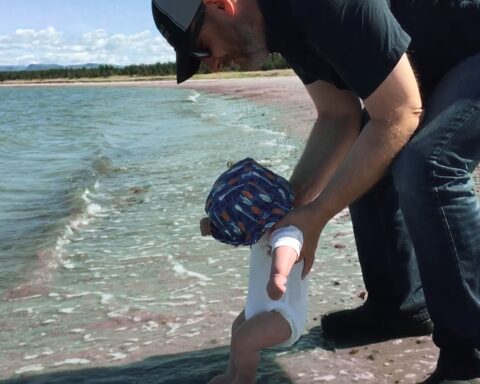The Mill
(Canada, 44 min.)
Dir. David Craig
For more than 50 years, white foam and murky water have filled much of a lifeless harbour on Nova Scotia’s north shore. Now, the hunt for solutions is causing friction; industry against industry and neighbour against neighbour.
At the centre of all this is the Northern Pulp Mill that has been allowed to dump effluent into Pictou Country’s Boat Harbour since 1967. The province has ordered an end to this, giving the mill a hard deadline of January 2020 to make changes to their systems of waste and sewage management or face closure.
The Mill takes us on an in-depth dive into the events leading up to the January 2020 closure date and reveals all sides of the story. The film unveils the history of the Northern Pulp Mill, Boat Harbour and the local Indigenous people’s connection to the land. Andrea Paul, chief of the Pictou Landing First Nations, reminds us that Boat Harbour was once called A’se’k, which means ‘the other room’. It was a place her people went to if they were hungry or for medicine. In 1967, all that was taken away from them.
Now, Paul wants “the pollution to stop running in our backyard. We need that to stop.” The Northern Pulp Mill’s proposed solution this time was to build a pipe that would carry treated effluent water into another portion of Pictou Landing. Essentially, it was the same idea they presented in the 60s, only this time they would be dumping polluted water into another fishing community.
One community member living near the newly proposed pipe location, whose husband is a fisherman, said the Mill never posed a problem to her until now. A NIMBY, her sole mission is to stop the pipeline. She is not alone in that mission. The announcement of the pipe splits the community in two, those against and those for the pipe—and the continuation of the Mill.
One fisherman says in the documentary, “There is no other option, there is no second option, there is no plan B, it’s either the pipe or no mill. So…no pipe or no mill…it’s not a negotiation, that’s drawing a line in sand.”
During the filming of The Mill, the fishermen and the Indigenous people of the Pictou Landing absolved each other of blame and joined sides. The water is one thing they knew they want to protect. Opposing them are the Mill and pipe supporters, who recognize the substantial economic impact the plant has for Nova Scotia. In the film, the general manager of the pulp mill states “We are here for the long term and we want to continue to contribute to the economy of Nova Scotia.” The film shows the arguments of people from both sides of the story, presenting the audience with the chance to weigh in and make their own decision.
A third into the film, a sense of urgency kicks in. News reports reveal that there is a pipe leak, which caused its proposed location to be denied. The filmmakers chose to follow journalist Aaron Beswick of The Chronicle Herald as he investigates the pipe’s future trajectory and location. It is action filled, in the moment, and an extremely effective way of revealing the story. The pulp mill proposes yet another location for the pipe, Caribou Point, and Beswick wonders what the fisherman and first nations people think of that?
Andrea Paul tells him it’s out of their backyard, but it’s still going into the strait, into someone else’s backyard. Dennis McGee, a local fisherman, states that their intention is not to close down the mill, or let anyone lose their job, but he wonders “what makes their job worth more than mine?”
Once again, the community is torn, and no one is sure what is going to happen.
The film’s third section focuses on the Northern Pulp Mill’s impact on forestry. If it shuts down, so does most of the forestry industry in Nova Scotia. We listen to a saw mill owner and a forester. For them, the mill closing means the beginning of the end for them. One owner says, “it’s like a domino effect.”
The Mill offers a current, in-depth and impartial view of the decades-long tale of the plant’s effluent removal policy, which has affected the peoples’ health, the life of the harbour and the economy in northern Nova Scotia. As the film shows, a battle is now raging over the issues raised in the film.
What is going to happen between now and January 2020? Nobody knows anything for certain, except that the January 31st closure date is not changing.
The Mill premieres on CBC Docs POV and CBC Gem on August 29 at 9 p.m. ET (9:30 NT).












